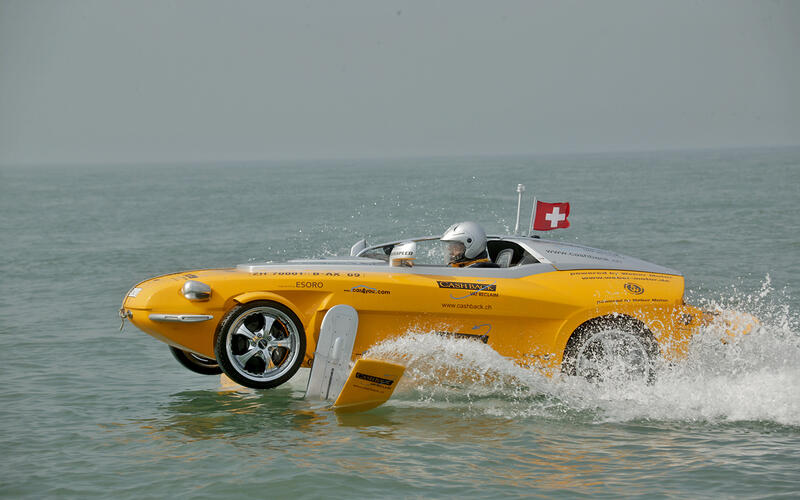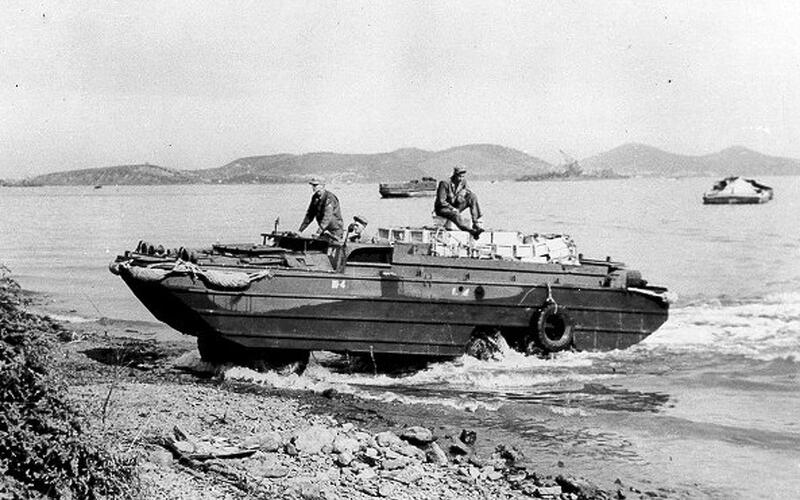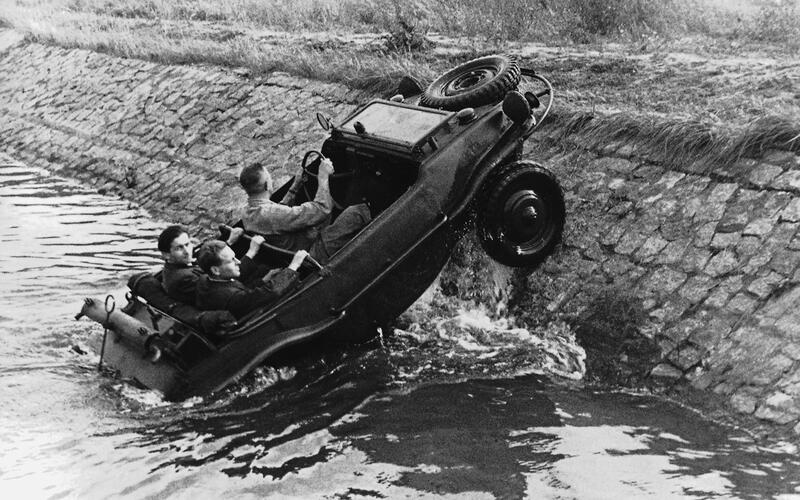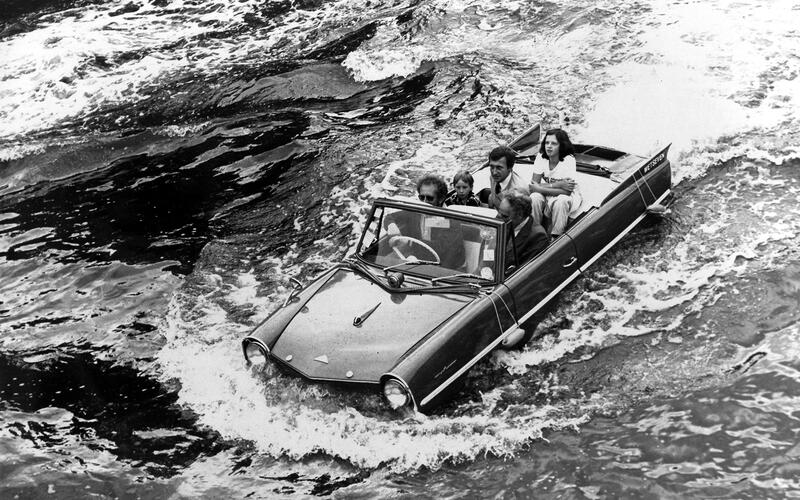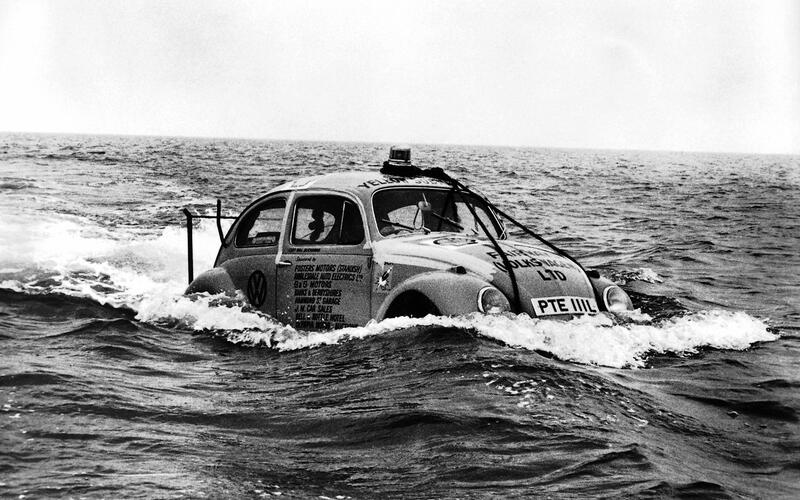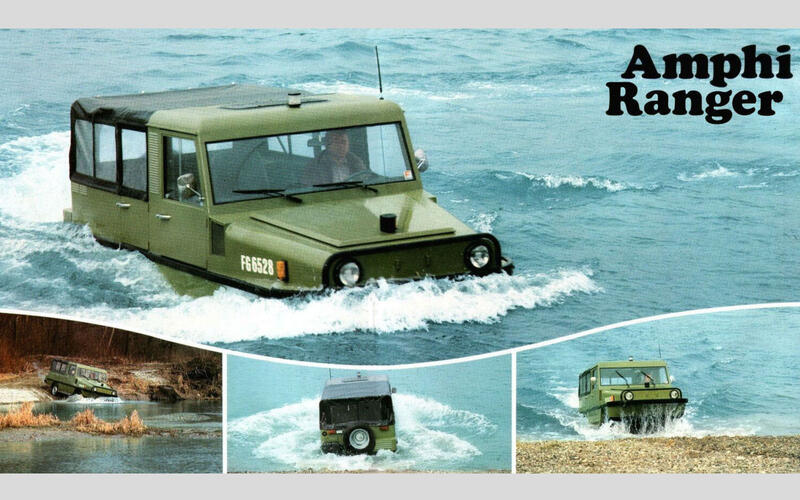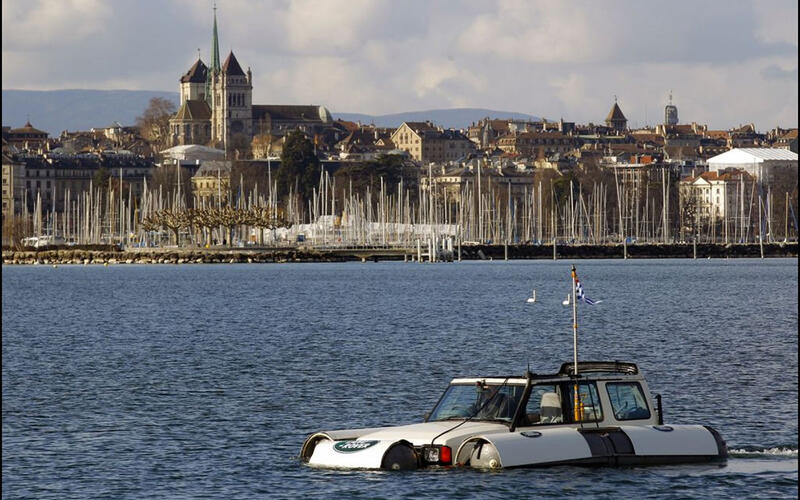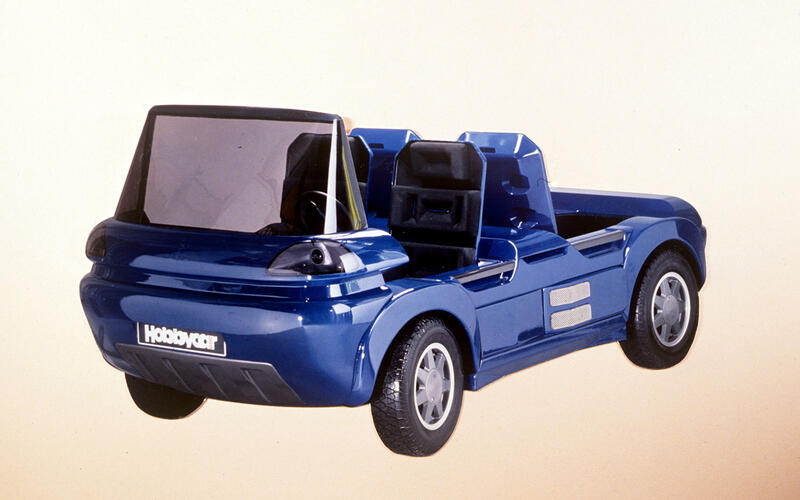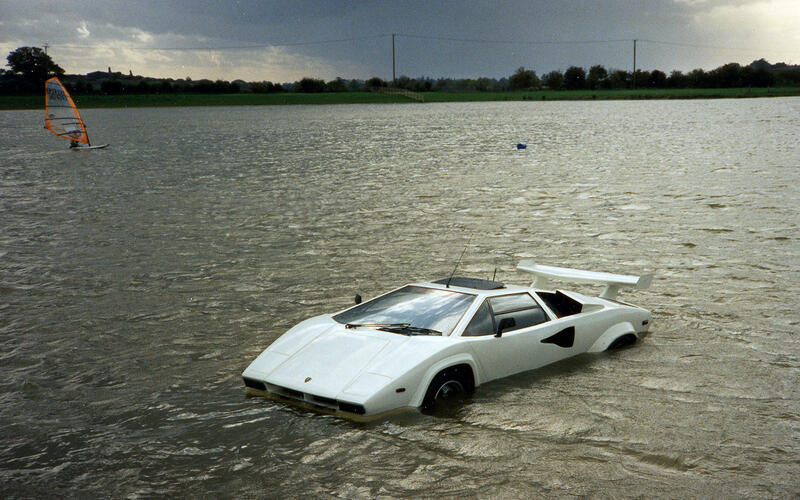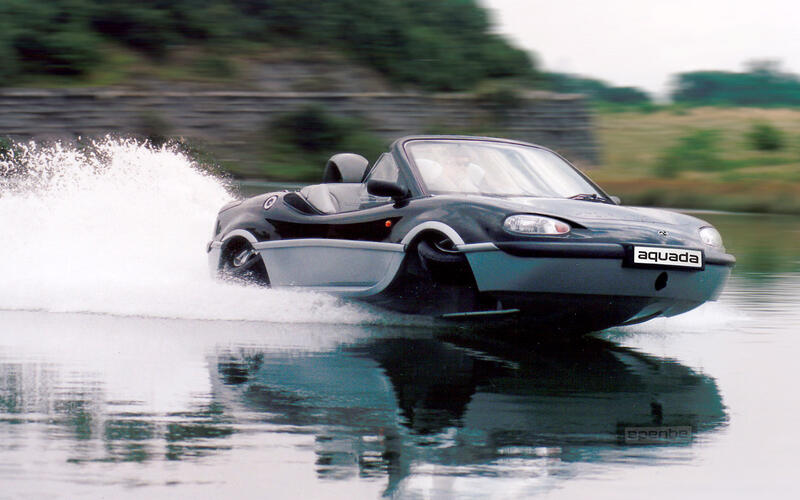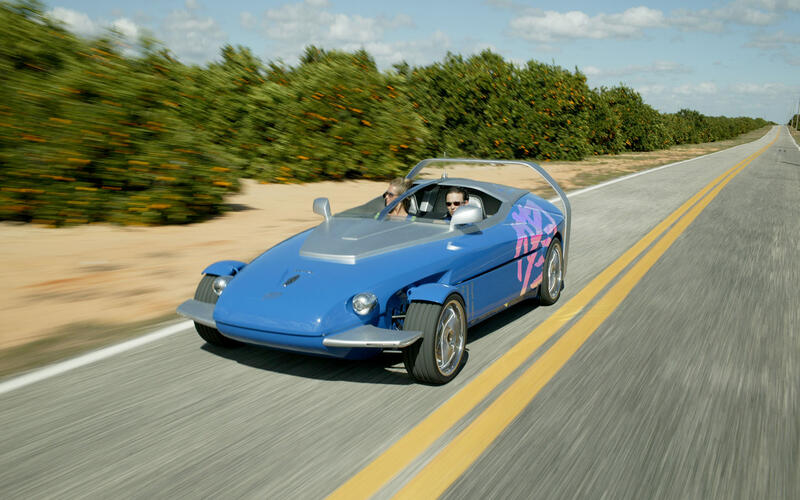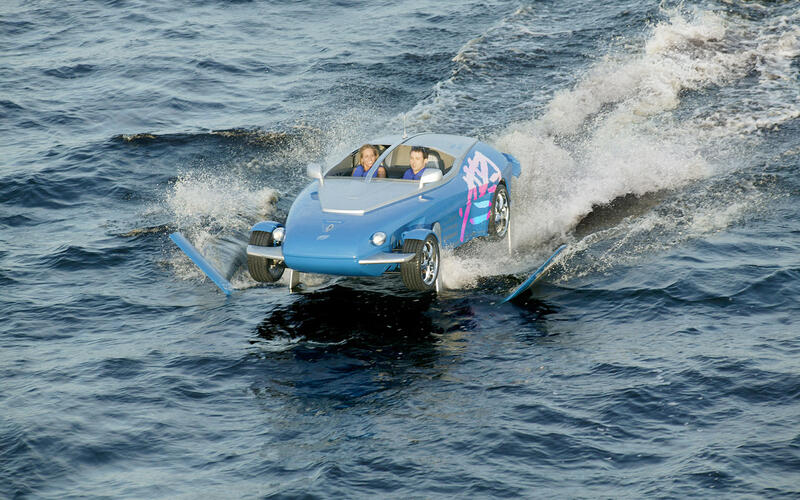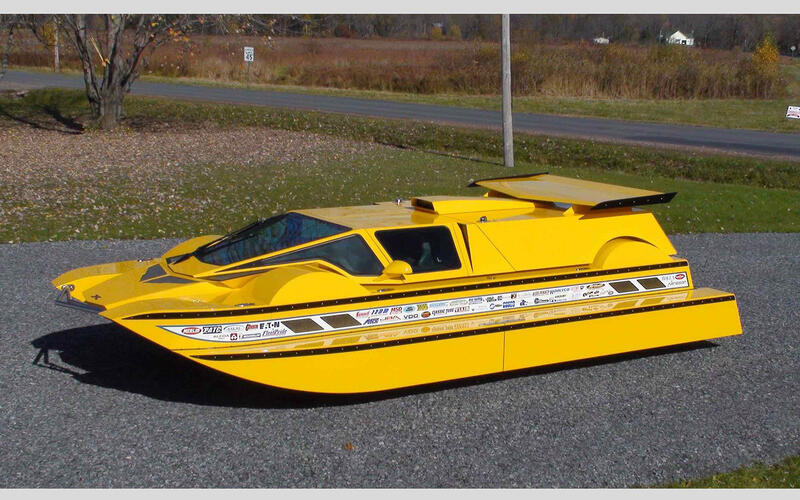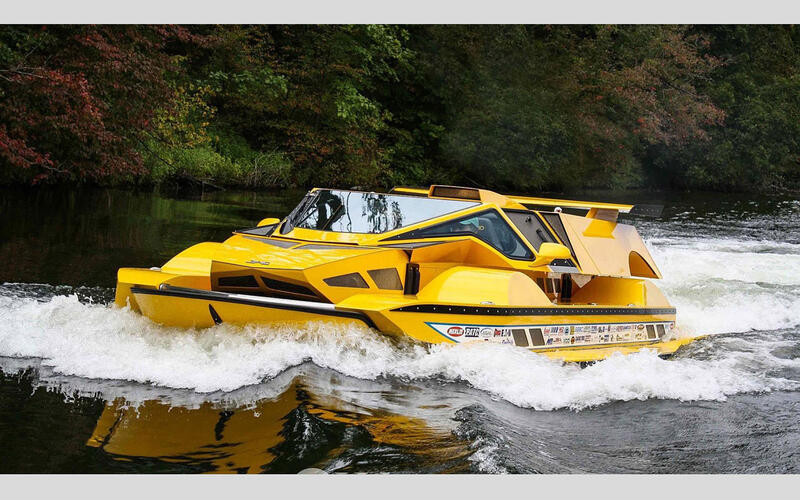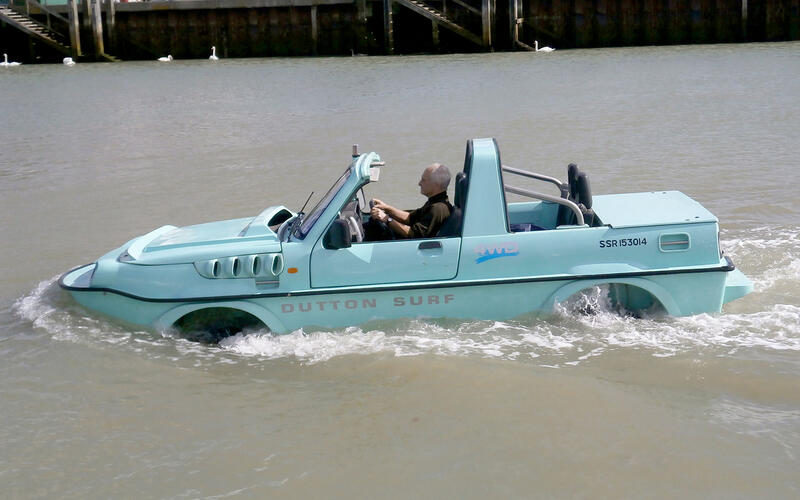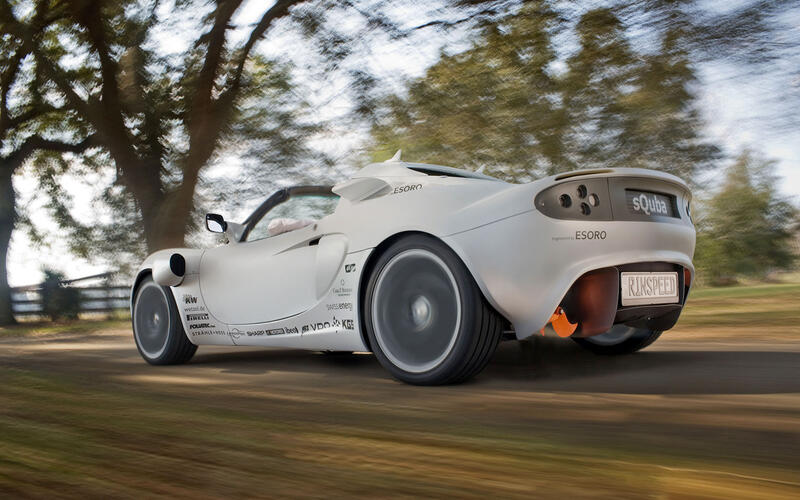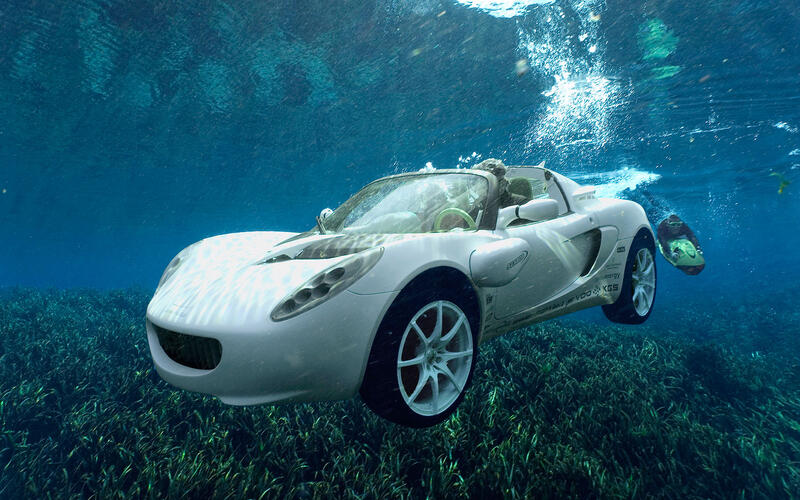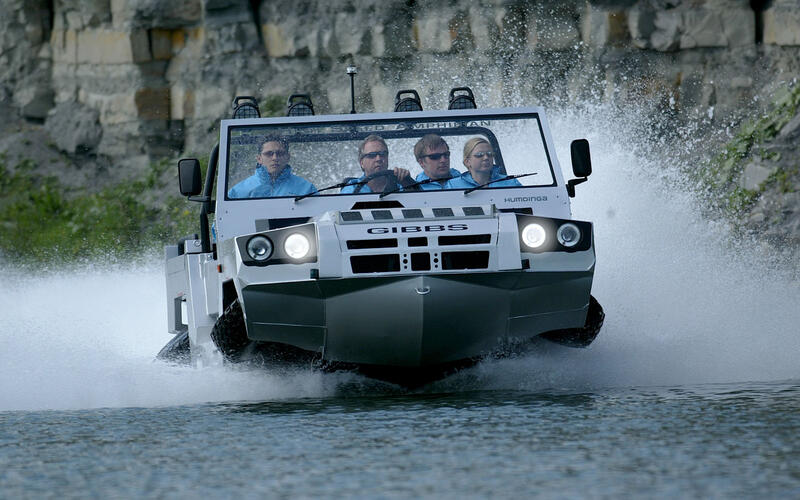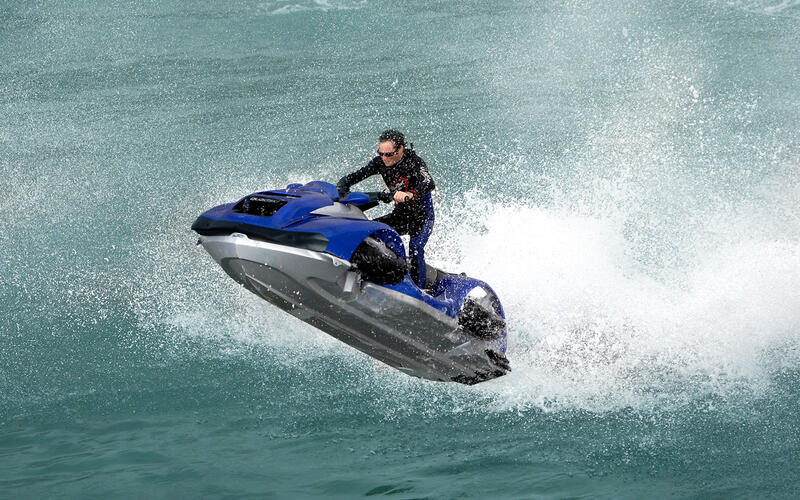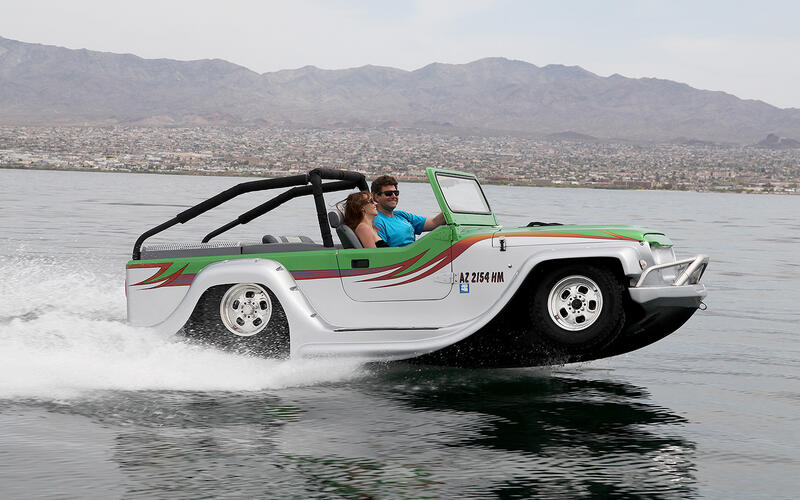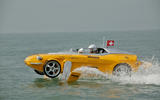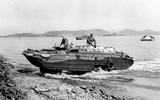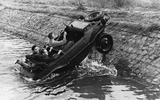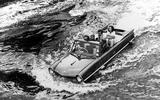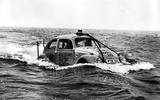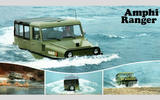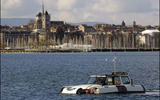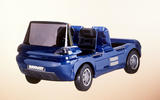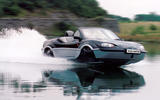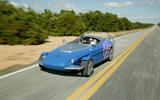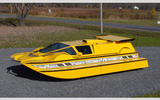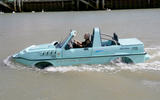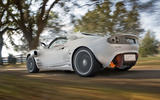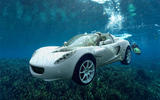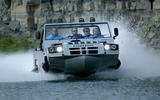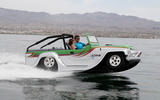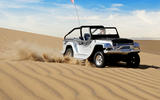 Slide of
Slide of
Nobody seems to know who built the first amphibious car, but what is known is that it took a war to create something viable.
Since then there's been a raft of vehicles vying for supremacy on the ocean wave, some of which have sold in reasonable numbers, but most of which were a commercial disaster. But if you thought the amphibious car was a niche too far, read on and you'll see that there are still plenty of companies that will still sell you one…
 Slide of
Slide of
DUKW (1942)
First produced in 1942, the DUKW built by General Motors is still well known thanks to its role as tourist transport in big cities such as London. Created to provide all-terrain transport during WW2, the DUKW featured six wheels (all driven) and was based on a GMC military truck. As such the engine produced just 91bhp yet the DUKW tipped the scales at over six tonnes and had a payload of 2300kg, yet it was still claimed to be capable of 50mph on land, but just six knots (6.4mph) on water.
 Slide of
Slide of
VW Schwimmwagen (1942)
Known officially as the Type 166, Volkswagen’s Schwimmwagen was based on VW’s Kubelwagen, which itself was derived from the Beetle. That's why there was just 25bhp on tap from an 1131cc flat-four engine mounted in the rear. Used mainly by the German army in World War 2, the Schwimmwagen is one of the most prolific of all the amphibious cars ever created with over 14,000 made – although just a handful have survived.
 Slide of
Slide of
Amphicar 770 (1961)
Once WW2 was out of the way, the Amphicar was the most successful amphibious car ever made, at least in commercial terms. Launched (as it were) in 1961, the Amphicar was produced until 1965 with almost 4000 of them being sold. Power came from an 1147cc Triumph Herald engine, which could take the 770 to 70mph on land and around 7 knots on water. Yes, you’re right, it does look rather dangerous.
 Slide of
Slide of
VW Beetle (1972?)
Malcolm Buchanan successfully crossed the Irish Sea in his home-converted road-going Beetle, the 37-mile journey from the Isle of Man to Cumberland taking him just under eight hours. We’re trying to pin down when he did it; everywhere we look it says it was during the 1960s but that’s a 1972/73 registration plate that the car is wearing...
 Slide of
Slide of
RMA Amphi Ranger (1985)
Built between 1985 and 1995, the four-wheel drive RMA (Rheinhauer Maschinen und Armaturenbau) Amphi Ranger initially came in short-wheelbase three-door form, but was later offered with five-doors and a stretched wheelbase. Power came from Ford; at first there was a 2.0-litre four-pot engine but later there was a 2.8-litre Cologne V6 fitted; a 2.9-litre version of the same engine was adopted later on. The Amphi Ranger was claimed to be capable of around 90mph on the road and in 1990 the car was listed at £96,286 which is why hardly any were sold.
 Slide of
Slide of
Land Rover Discovery (1990)
When Land Rover launched the Discovery in 1990 it wanted to make as big a splash as possible, and somebody in the marketing team clearly took this a bit too literally. The result was an amphibious Disco created by Land Rover's Special Vehicle Operations division especially for Cowes Week, a prestigious yachting event that happens every August off the cost of the Isle Of Wight.
 Slide of
Slide of
Hobbycar (1992)
Launched at the 1992 Paris Salon, the Hobbycar B612 featured a mid-mounted Peugeot diesel engine and could be bought in convertible or hard-top forms, or there was a pick-up available too. On land there was four-wheel drive while on water there were hydrojets, and thanks to the fitment of Citroen hydropneumatic suspension the height was adjustable. Just 52 Hobbycars were made, largely because of the high purchase cost of 280,000 French francs.
 Slide of
Slide of
Lamborghini Countach (1995)
Another home-built special, this time by Mike Ryan who has created a whole raft of amphibious vehicles through his SeaRoader company. This one was based on a Countach replica fitted with a Rover 4.2-litre V8 and featuring all sorts of genuine Lambo bits to make it look convincing; the dashboard, glass and wheels/tyres were all genuine Countach items. The car was pretty accomplished on the road as well as at sea; it last popped up for sale in 2016.
 Slide of
Slide of
Gibbs Aquada (2003)
One of the most high-profile amphibious cars ever created thanks to lots of media coverage when it burst onto the scene in 2003, the Gibbs Aquada is claimed to be capable of over 100mph on land and more than 30mph on water. Power was provided by a 175bhp Rover 2.5-litre KV6 petrol engine.
 Slide of
Slide of
Rinspeed Splash (2004)
Frank Rinderknecht founded Rinspeed in the late 1970s, to sell tuning and styling parts. By the 1990s he was building one barking mad concept after another. These crazy creations were always fully functional, then in 2004 Rinderknecht moved things up a gear with the unveiling of the Splash, a working amphibious car that could skate across the surface of a body of water.
 Slide of
Slide of
Rinspeed Splash (2004)
Made of carbon composites, the Splash was fitted with a hydrofoil which was usable from 20mph but up to 50mph was possible, positioned about 60cm above the surface of the water. Power came from a 140bhp turbocharged 750cc engine that ran on natural gas that gave the 825kg Splash a top speed of 124mph on land.
 Slide of
Slide of
Dobbertin Hydrocar (2004)
Rick Dobbertin made his name building hot rods and customs in the 1980s, but by the mid-1990s he had graduated to creating a vehicle to travel around the world on land and sea: the Dobbertin Surface Orbiter. He racked up over 30,000 miles on land and water then moved on to his next project, the Hydrocar, seen here in land mode.
 Slide of
Slide of
Dobbertin Hydrocar (2004)
At the flick of a switch the Hydrocar moves into water mode. Fitted with a 762bhp V8 and a four-speed automatic transmission, the Hydrocar is capable of over 125mph on land and more than 60mph on the water. There's good news too, because the one Hydrocar built is available for a mere $495,000 (that's less than half of what it cost him to build it).
 Slide of
Slide of
Dutton Surf (2005)
Tim Dutton made his name and fortune producing kit cars in the 1970s and 1980s before he sold up, only to return in 1995 with the Mariner and Commander. These were amphibious cars based on the Ford Fiesta and Suzuki Samurai respectively, then in 2005 he launched the Surf, which used the oily bits from a Suzuki Jimny. You can still buy one of you fancy it; kits start at £10,690 + VAT.
 Slide of
Slide of
Rinspeed Squba (2008)
Why settle for a car that can merely skate across the water when you can build one that will cruise under the surface? Unveiled as a concept at the 2008 Geneva motor show, the Squba was a heavily reworked Lotus Elise that came about after Rinspeed founder Frank Rinderknecht watched the James Bond film The Spy Who Loved Me, which famously featured an amphibious Lotus Esprit.
 Slide of
Slide of
Rinspeed Squba (2008)
Frank Rinderknecht watched the Esprit doing its thing and decided that what the world needed was a 21st century underwater car. The result was an all-electric amphibious car that could do 75mph on land, 3.2 knots (3.7mph) on the surface of the water and half this below the surface.
 Slide of
Slide of
Gibbs Humdinga (2012)
Almost a decade after its Aquada was first shown, Gibbs unveiled this much more adventurous amphibious vehicle. Measuring over seven metres long and powered by a 370bhp marine diesel V8, the Humdinga could carry up to nine people at speeds of more than 80mph on land and over 30mph on water.
 Slide of
Slide of
Gibbs Quadski (2012)
There's no holding Gibbs back; it has an amphibious vehicle for every occasion. In this case the Quadski is a combination of a quad bike and a jet ski. Packing a 140bhp 1.3-litre engine, it's claimed to be capable of 45mph on land and water. Gibbs is currently working on a version fitted with skis so it can glide over snow too.
 Slide of
Slide of
Watercar Panther (2013)
Watercar started out in 1999, as a personal project to build the world's fastest amphibious vehicle. Fitted with a Corvette engine the Python claimed the record in 2010 at 60mph on water, and with that in the bag attention turned to creating a production car for sale. That car was the Panther, pictured here.
 Slide of
Slide of
Watercar Panther (2013)
The Panther's styling was inspired by Jeep's but the Watercar uses its own steel chassis and glassfibre bodywork. Power comes from a Honda 24-valve 3.7-litre VTEC V6 which is mounted in the nose and drives all four wheels on land – at up to 85mph. On the water the Panther is capable of a pretty rapid 44mph. Prices start at $139,000.
For decades, inventors have tried to perfect the amphibious car. Most have sunk without trace, but not all…
Advertisement

